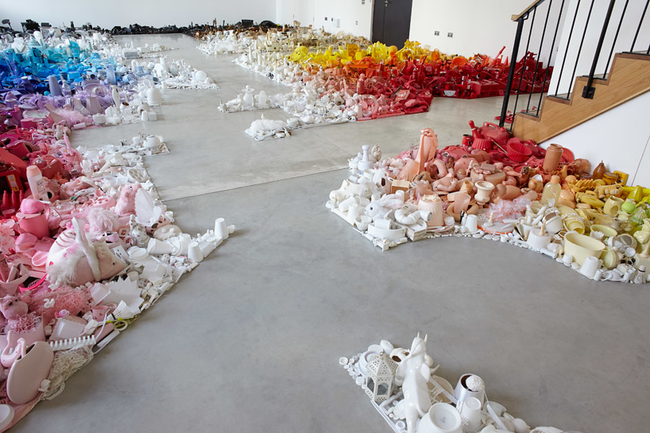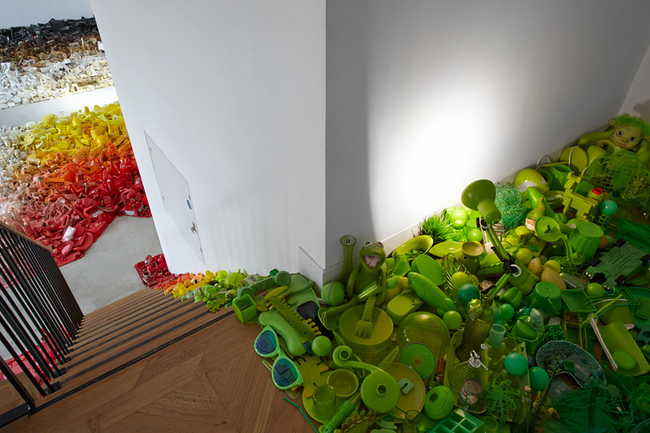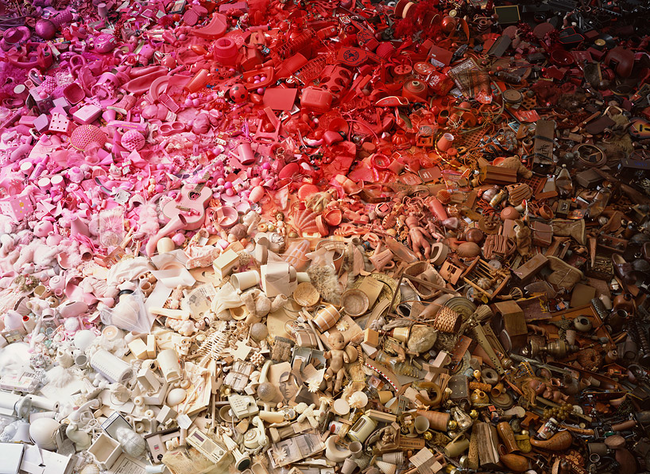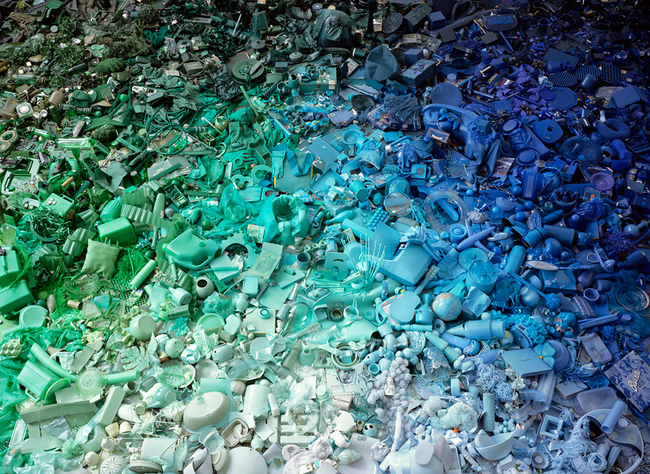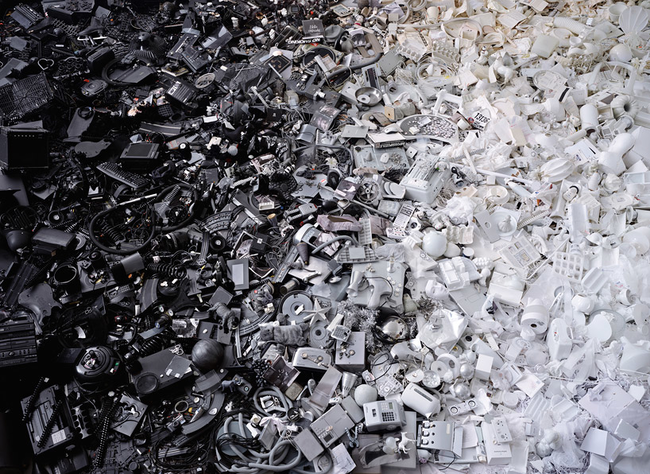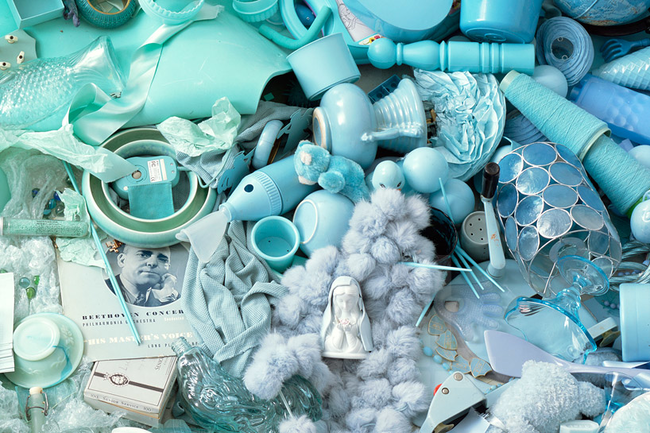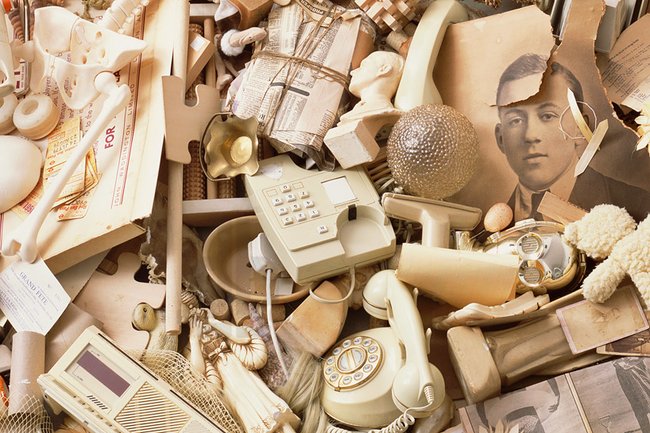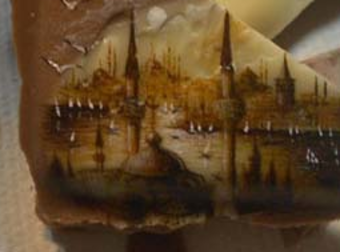kipple (kip’ – É™l): noun “…useless objects, like junk mail or match folders after you use the last match or gum wrappers or yesterday’s newspaper. When nobody’s around, kipple reproduces itself…the entire universe is moving towards a final state of total, absolute kippleization.”
–Philip K. Dick, Do Androids Dream of Electric Sheep? 1968
Science fiction writer Dick coined the word (which sadly never caught on in real-life vernacular) in his famous novel that would be later adapted into the film Blade Runner. It’s a pretty relatable concept, so much so that British photographer Dan Tobin Smith decided to use the concept as a basis for a large-scale installation project in his East London studio for the 2014 London Design Festival.
The studio, with the installation and walking paths.
Be careful on the stairs…
The piece, called The First Law of Kipple, features thousands of objects all meticulously arranged by color, so that Tobin Smith’s 200-square-meter space appears, from afar, to be a sea of colors. On closer inspection, though, you can see that the gently graduated colors come from the careful arrangement of dishes, electronics, toys, clothing, books, knickknacks and all kinds of random objects you might find lying around your house. Tobin Smith collected some of the objects, which number well into the thousands, and others were donated by the public after the artist put out an announcement on social media.
Everything is precisely arranged so that the colors flow naturally into one another
Tobin Smith photographed the installation and created a series of prints.
Tobin Smith was inspired by the Philip K. Dick term and definition. He expanded on it to create this piece, which he says touches on the ideas of clutter and how it relates to a person’s psychological state. It also draws on themes of “acceptable” versus “unacceptable” clutter, and how people are willing to overlook an object’s uselessness if it’s visually attractive. Larger still, is the idea that items of all kinds are produced in bulk, even though resources are limited.
Up close, the sea of color becomes a collection of recognizable objects.
(Via designboom|Dan Tobin Smith)
You could also use the piece to contemplate where stuff ends up. While the installation is beautiful on first glance because of its arrangement, you can’t shake the feeling that it’s really reminiscent of a garbage dump. The question arises then: what will happen to all of these things when the installation is over? Where will it all go? If it doesn’t get thrown out or repurposed, that’s going to be one heck of a garage sale.
